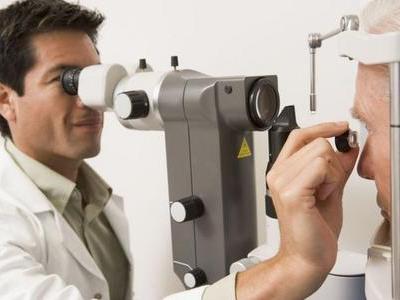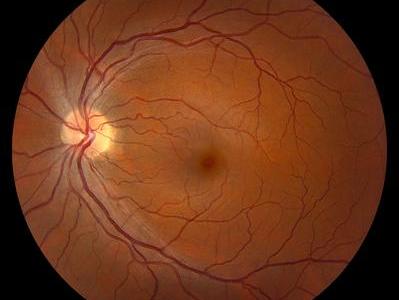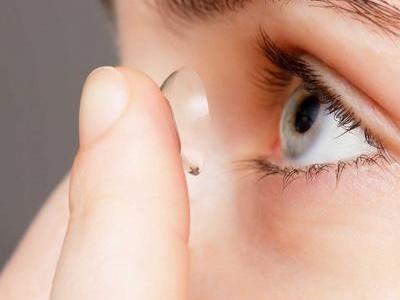Comprehensive Exams
 Regular evaluations of eye health is crucial at all life stages and can reveal any number of unknown concerns regarding vision as well as ocular and systemic health. As a result of a Comprehensive Evaluation, if necessary, you will receive a spectacle correction that will tailored for your unique demands | Retinal Health Evaluations
 Lorem ipsum (sample text) dolor sit amet, consectetuer adipiscing elit. Sed luctus, libero quis ullamcorper sollicitudin, augue felis adipiscing nunc, ultricies pharetra wisi orci et massa. Donec justo dui, sollicit id. Libero quis ullamcorper sollicitudin, augue felis adipiscing nunc, ultricies pharetra wisi orci et massa. Donec justo dui, sollicit id. | Contact Lens Fittings
 There are a number of reasons why you might prefer contact lenses to standard eyewear: a glasses-free look, hassle-free vision correction, wearing non-prescription sunwear and goggles, or the convenience of not having to worry about misplacing your glasses. If you have a high prescription or astigmatism, contact lenses may provide more enhanced vision correction than glasses. Today, you can even replace your bifocal glasses with bifocal contact lenses. Your eye care provider can recommend the best contact lenses for you based on a complete eye examination and a review of your visual needs both at work and play. Since most people can wear more than one type of lens, it’s important to know what the choices are and the advantages and disadvantages to each. |
A quick look at some of the most common eye diseases diagnosed and often treated at the Chugach Eye Clinic“Eye diseases” is a blanket term that refers to a host of diseases relating to the function of the eye. Below we describe some of the more common types of eye diseases and how they are generally treated. For more in-depth information, please speak with your eye care provider. Conjunctivitis (Pink Eye)Conjunctivitis, also known as pink eye, is an infection or inflammation of the conjunctiva – the thin, protective membrane that covers the surface of the eyeball and inner surface of the eyelids. Caused by bacteria, viruses, allergens and other irritants like smoke and dust, pink eye is highly contagious and is usually accompanied by redness in the white of the eye and increased tearing and/or discharge.While many minor cases improve within two weeks, some can develop into serious corneal inflammation and threaten sight. If you suspect conjunctivitis, visit your eye care provider at Twin Falls Eyecenter for an examination and treatment. Diabetic Eye DiseaseDiabetic eye disease is a general term for a group of eye problems that can result from having type 1 or type 2 diabetes, including diabetic retinopathy, cataracts and glaucoma. Often there are no symptoms in the early stages of diabetic eye disease, so it is important that you don’t wait for symptoms to appear before having a comprehensive eye exam. Early detection and treatment of diabetic eye disease will dramatically reduce your chances of sustaining permanent vision loss. GlaucomaOften called “the silent thief of sight,” glaucoma is an increase in the intraocular pressure of the eyes, which causes damage to the optic nerve with no signs or symptoms in the early stages of the disease. If left untreated, glaucoma can lead to a decrease in peripheral vision and eventually blindness. While there is no cure for glaucoma, there are medications and surgery available that can help halt further vision loss. Early detection and regular eye exams are vital to slowing the progress of the disease. Macular DegenerationMacular degeneration is a chronic, progressive disease that gradually destroys sharp central vision due to a deterioration of the macula, a tiny spot in the central portion of your retina comprised of millions of light-sensing cells. Because it is so commonly associated with aging, it is also known as age-related macular degeneration (AMD). There are two forms of AMD called “dry,” most common and with no known treatment, and “wet,” less common and treated with laser procedures. Genetic testing is now available to help identify those most likely to develop “wet” macular degeneration. In most cases, reversing damage caused by AMD is not possible, but supplements, protection from sunlight, eating a balanced diet and quitting smoking can reduce the risk and progression of macular degeneration. For suggestions, speak with your eye care provider. Eye ConditionsAmblyopia (Lazy Eye)Lazy eye, medically known as amblyopia, is a loss or lack of development of vision, usually in one eye. This degenerative process usually begins with an inherited condition and appears during infancy or early childhood. Lazy eye needs to be diagnosed between birth and early school age since it is during this period that the brain “chooses” its visual pathway and may ignore the weaker eye permanently. Lazy eye is not always easy to recognize since a child with worse vision in one eye does not necessarily have lazy eye. Because of this, it is recommended that all children, including those with no symptoms, have a comprehensive eye examination by the age of three and sooner if there is a family history of any eye condition or disease. If you suspect a problem, or need to set up your child’s first eye examination, contact Twin Falls Eyecenter to set up an appointment. BlepharitisBlepharitis is a general term for an inflammation of the eyelid and eyelashes. It is among the most common and stubborn eye conditions usually resulting from poor eyelid hygiene, a low-grade bacterial infection (usually staphylococcal), an allergic reaction and/or abnormalities in oil gland function. Like some other skin conditions, blepharitis can be controlled but not cured. The main goals in treating it are to reduce the amount of bacteria along the lid margin and open plugged glands. Contact Twin Falls Eyecenter to assess the severity of your problem and the best treatment method. CataractsA cataract is a clouding of the eye’s normally clear lens, which leads to a progressive blurring or dimming of vision. It is the world’s leading cause of blindness and among the most common conditions related to aging – by age 65, you have a 50 percent chance of developing a cataract, and, by age 75, it jumps to 70 percent. A cataract starts out small and initially has little or no effect on vision. As the cataract progresses, it becomes harder to read and perform other normal tasks. In the early stages, your doctor may recommend stronger eyeglasses and adjusting your lighting to reduce glare. When cataracts disrupt your daily life, your doctor may recommend cataract-removal surgery, which is one of the most frequent and successful procedures done in the U.S. Computer Vision SyndromeComputer Vision Syndrome is characterized by neck pain, blurry vision, stiff shoulders, headache and watery eyes when working in front of a computer screen. The symptoms are typically due to posture, dry eyes, eye muscle coordination and poorly corrected vision. Since computer monitors are typically 20 to 26 inches from your eyes, your regular glasses may not be the best option for computer work. This distance range is considered intermediate – closer than what you use to drive a car but farther away than what you use to read. Special lens designs for computer work provide you with a larger intermediate area for viewing the computer and your immediate work area like the top of your desk. Twin Falls Eyecenter can help you determine if these special lenses are appropriate for you. Dry Eye SyndromeDry eye syndrome refers to a breakdown in the quantity or quality of tears to moisten, cleanse and protect the eyes. This is significant because, with each blink, tears protect the surface of the eye, washing away dust and microorganisms. When this protective coating dries up, the eyes may feel “gritty” or burn and can be more sensitive to light. In extreme cases, vision can be blurred. If you suspect that you have dry eye, see your eye doctor. Proper care will not only increase your comfort – it will protect your eyes. Your eye care provider can perform a series of tests to determine if you have dry eyes. StrabismusCross-eyed, medically known as strabismus, refers to a condition in which eyes are misaligned. It commonly occurs when the muscles that control eye movement are not properly working together. The result is one or both eyes turning inward, outward, upward or downward, or one or both eyes moving irregularly. Strabismus is usually diagnosed during childhood and affects about 4 percent of children, afflicting boys and girls equally. Though it cannot be prevented, its complications can be avoided with early intervention. Even if you notice symptoms intermittently – when your child is ill, stressed or fatigued – alert your eye care provider. Chugach Eye Clinic has the experience and equipment necessary to diagnose and often treat the eye conditions detailed above at our offices in Southern Idaho. For more information please schedule an appointment with us. |



